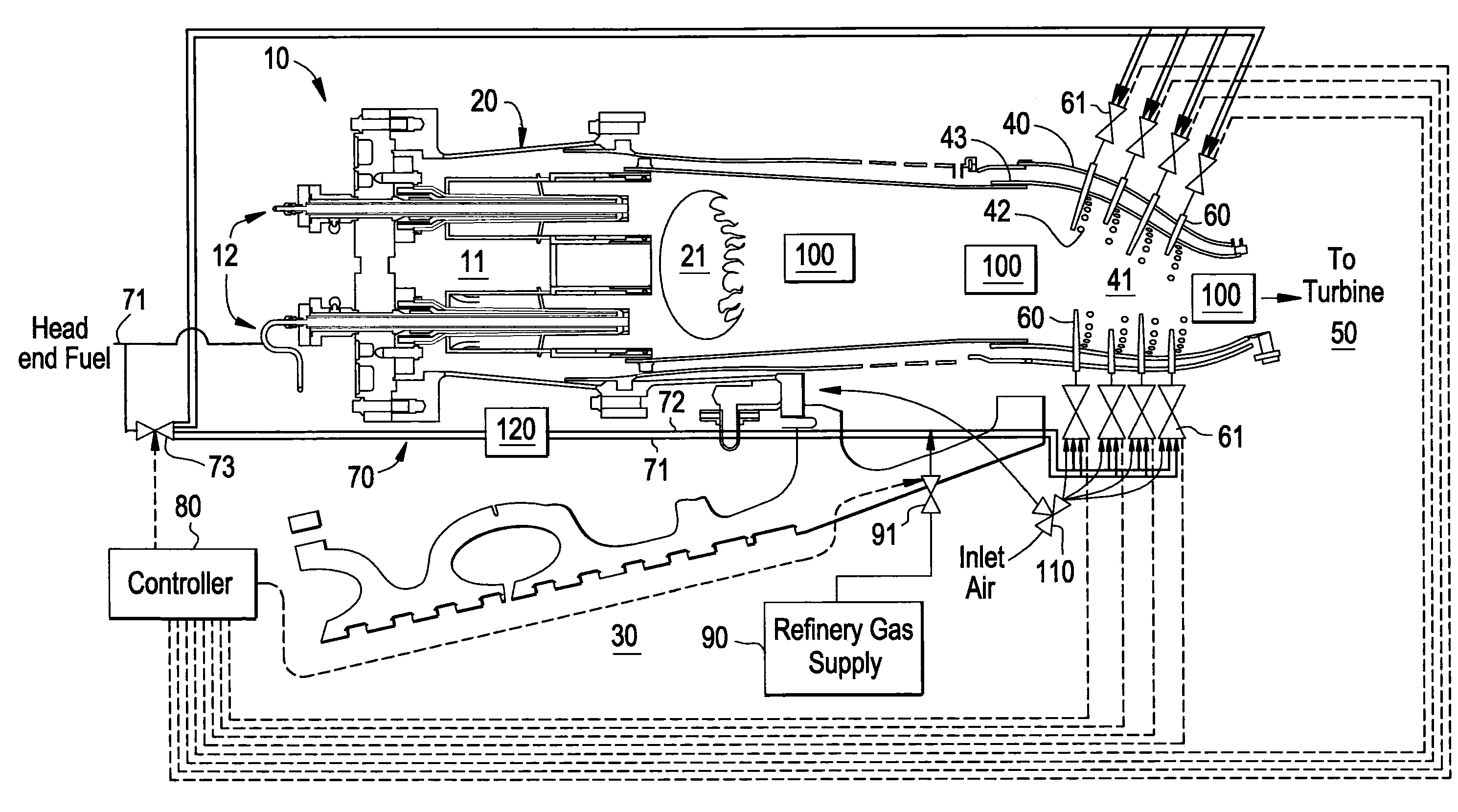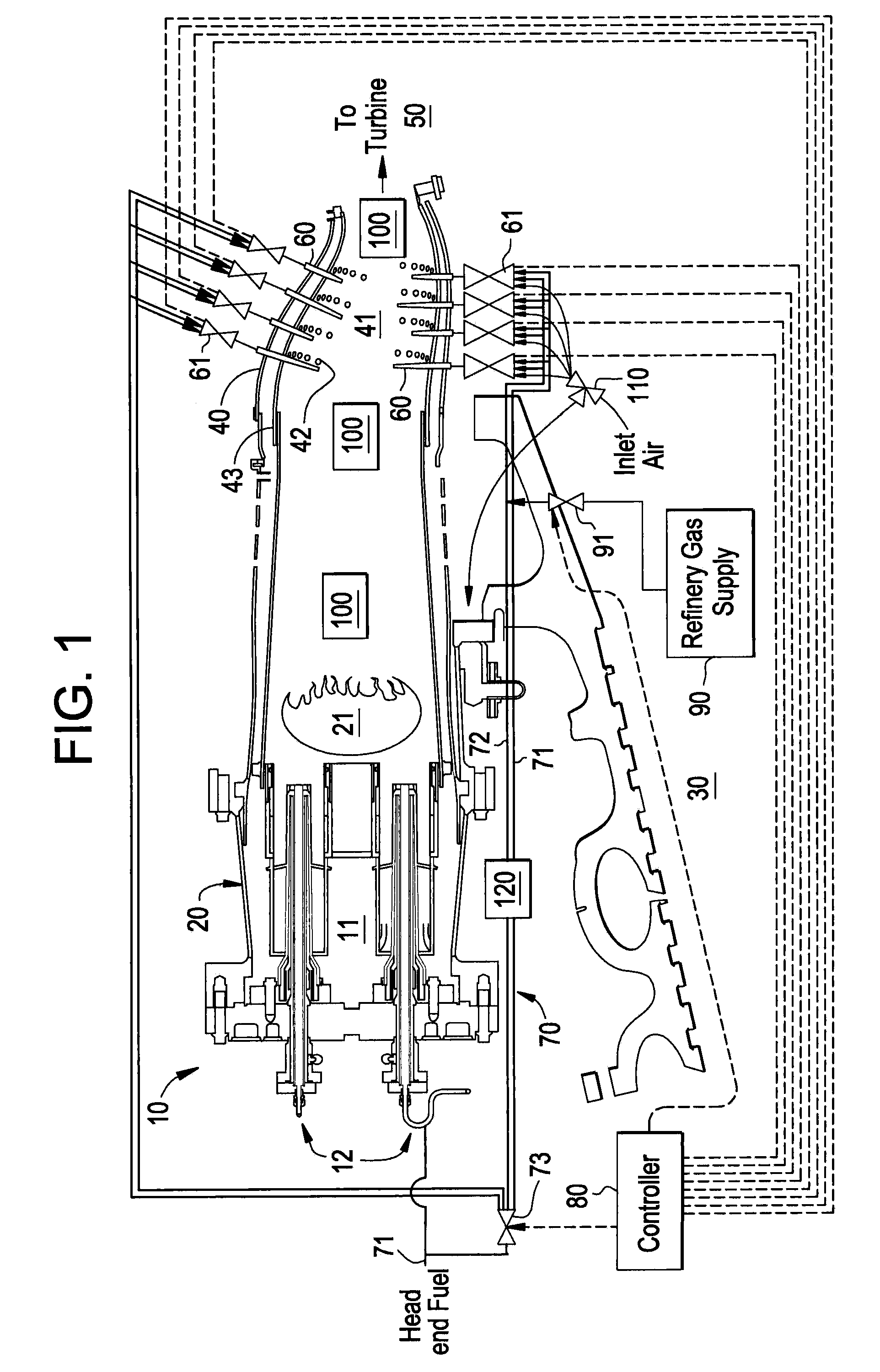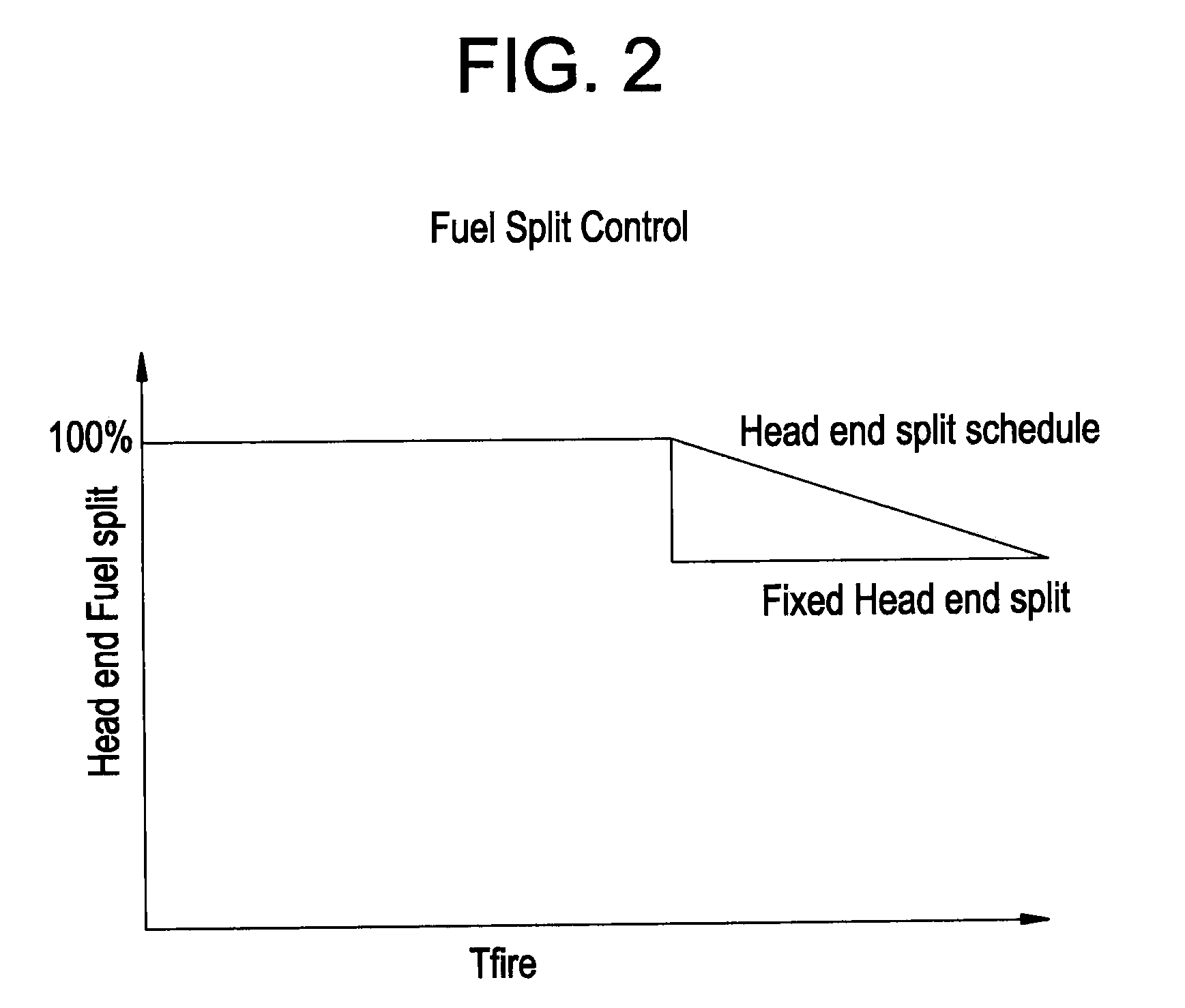Late lean injection with adjustable air splits
a technology of air splits and lean injection, which is applied in the direction of process and machine control, lighting and heating apparatus, instruments, etc., can solve the problems of significant nox formation, high nox formation, and gas turbine engine failure to operate at high efficiencies
- Summary
- Abstract
- Description
- Claims
- Application Information
AI Technical Summary
Benefits of technology
Problems solved by technology
Method used
Image
Examples
Embodiment Construction
[0016]With reference to FIG. 1, a gas turbine engine 10 is provided and includes a combustor 20 having a first interior 21 in which a first fuel supplied thereto by fuel circuit 70 is combustible, a compressor 30 by which inlet air is compressed and provided to at least the combustor 20 and a transition zone 43 and a turbine 50, including rotating turbine blades, into which products of at least the combustion of the first fuel are receivable to power a rotation of the turbine blades. The transition zone 43 is disposed to fluidly couple the combustor 20 and the turbine 50 and includes a second interior 41 in which a second fuel supplied thereto by the fuel circuit 70 and the products of the combustion of the first fuel are combustible. As shown, the combustor 20 and the transition zone 43 combine with one another to generally have a form of a head end 11, which may have various configurations, as will be discussed below.
[0017]As shown in FIG. 1, the head end 11 may include multiple p...
PUM
 Login to View More
Login to View More Abstract
Description
Claims
Application Information
 Login to View More
Login to View More - R&D
- Intellectual Property
- Life Sciences
- Materials
- Tech Scout
- Unparalleled Data Quality
- Higher Quality Content
- 60% Fewer Hallucinations
Browse by: Latest US Patents, China's latest patents, Technical Efficacy Thesaurus, Application Domain, Technology Topic, Popular Technical Reports.
© 2025 PatSnap. All rights reserved.Legal|Privacy policy|Modern Slavery Act Transparency Statement|Sitemap|About US| Contact US: help@patsnap.com



